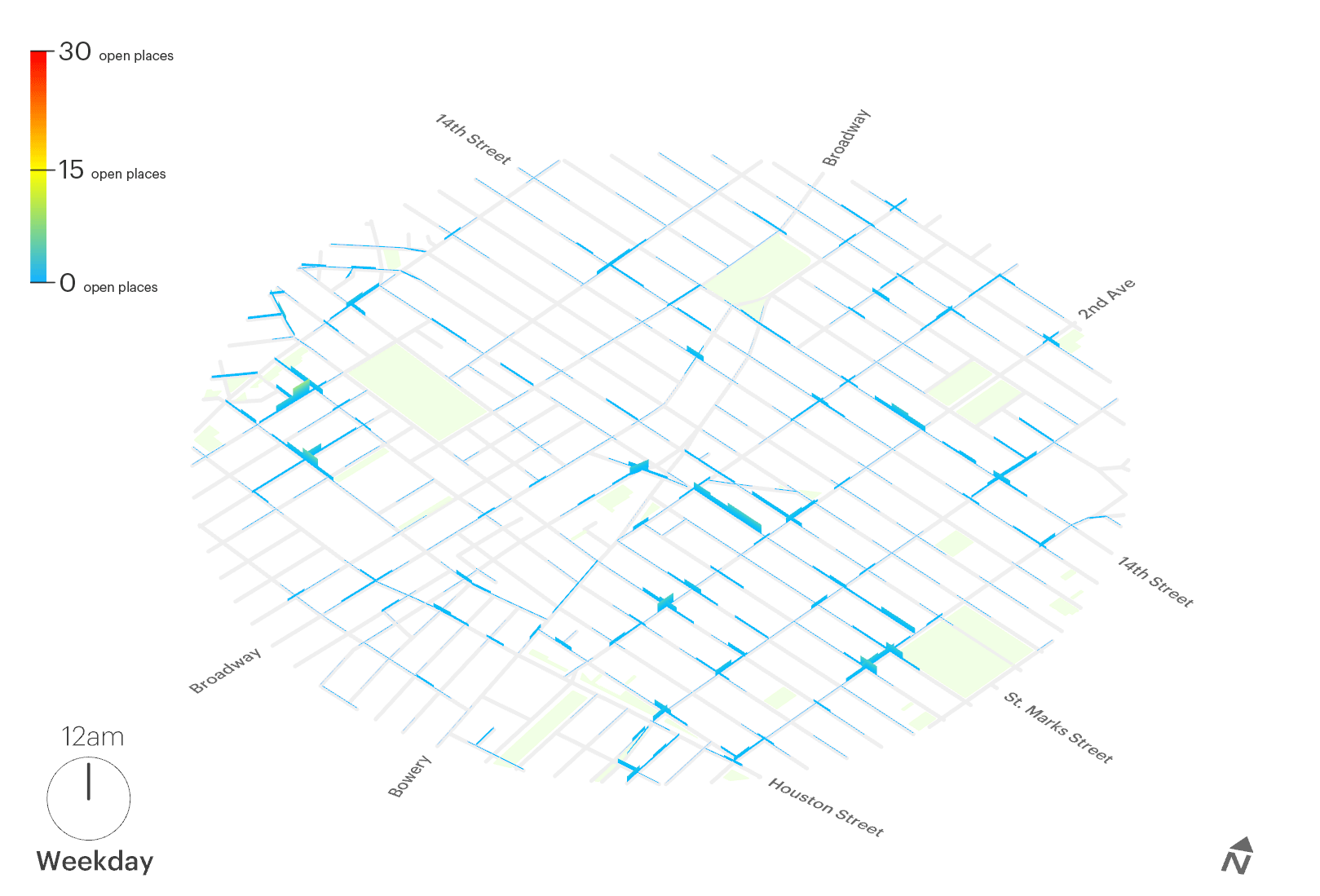The most desirable neighborhoods to live and work are those that radiate a sense of activity during the day and throughout the night. Active streets and public spaces feel vibrant, support diversity of both people and activities, and increase safety. Urbanists celebrate the dynamic nature of experience by striving for the ideal, “24-hour neighborhood” in the planning and design of new and existing urban neighborhoods.
Reacting against the zoning policies that created office-centric districts, which quickly became vacant after 5pm, urban planners began adopting new city typologies to activate these empty districts. Adding opportunities for residential and promoting a mix of uses will enliven a neighborhood at all hours, even on weekends. Retail, restaurants, entertainment, and night life promote activity and establish a sense of community.
What We're Doing
The implications mixed-use, 24-hour neighborhoods have on the urban experience are complex, especially considering their qualitative nature. KPFui explores tools and methodologies to gain some insight into the urban condition and formulate more concrete definitions of the “ideal neighborhood.”
Google Places, the dataset that informs the search function of Google Maps, provides a wealth of information pertaining to businesses around the world, including name, location, web address, ratings and reviews, price range, and hours of operation. With endless possibilities for evaluating such an all-encompassing dataset, this quick study visualizes hours of operation of businesses across three areas of New York City: the Financial District, East and Greenwich Villages, and Midtown. Open businesses are visualized over 24-hour increments on Wednesday and Saturday, selected to represent weekday versus weekend activity.
Analysis and comparison of the resulting animations give some clues as to how the density, diversity and accessibility of various business types impact the experience of the street.
Financial District, Manhattan
In the Financial District, there are more open businesses on Wednesday than Saturday, a dramatic difference that presumes that this area of Manhattan is largely made up of offices.
East Village and Greenwich Village, Manhattan
The level of activity on Wednesday and Saturday is more uniform than in the Financial District, implying that the neighborhoods are predominantly residential and retail focused. Broadway, known for its retail, attracts traffic on both days fairly consistently. The rich night life that the East Village is known for is also apparent per the density of businesses open late into the night.
Midtown, Manhattan
Midtown shows similarities to the Financial District in lower Manhattan with much less activity on Saturday than during the week. However, because of its close proximity to Times Square, a major tourist destination, the area sees more consistent activity during the day time on weekends than the Financial District.





